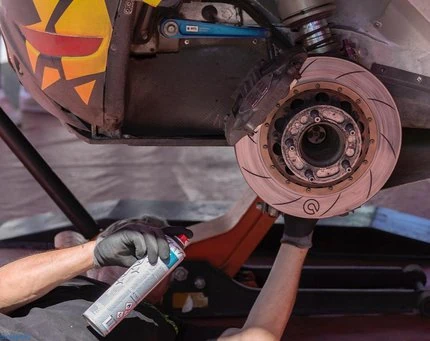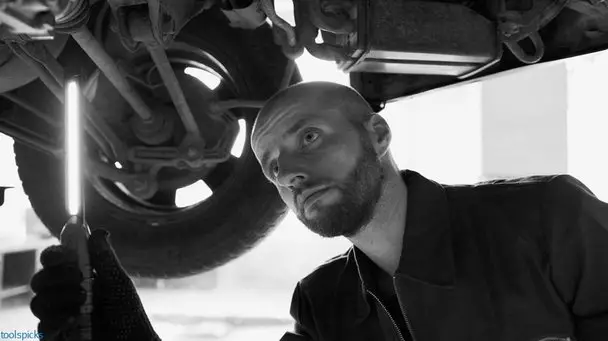The suspension system is crucial for ensuring comfort and stability when driving. Yet, it is often overlooked when it comes to maintenance. Most people don’t pay attention to it until they notice obvious signs of failure.
You do not have to wait until you notice squeaks and rattles to inspect and service your suspension system; always ensure regular maintenance. One crucial aspect of maintaining your suspension system is lubricating it.
Although a majority of suspension components are sealed, there are a few that still require lubrication. This article will discuss the parts of a vehicle’s suspension system that require lubrication and how to proceed.
Steps for Lubricating a Suspension System
Establish the Parts of the Suspension System That Require Routine Lubrication
Different vehicles have different types of suspension systems. You need to familiarize yourself with your car’s type of suspension system, its components, and whether they require routine lubrication.
Below is an overview of the main parts of a suspension system.
Springs
There are different types of springs depending on the type of suspension system. The most common ones include air springs, coil springs, leaf springs, and torsion bars. Some cars have coil springs at the front and leaf springs at the back, while others have one type of springs throughout.
Air suspension has become popular over the years and is mostly found in luxury cars, trucks, and buses. Such vehicles have air springs. Leaf springs and coil springs require lubrication, while torsion springs and air springs do not.
Leaf springs are attached to the frame of the car using fittings. Between the fittings are rubber bushings that absorb shock and enable the co-joined parts to bend and move freely.
Leaf springs with multiple leaves per side are fitted with a plastic component—a slipper—between them. It is crucial to grease the slipper to ensure a noiseless operation of the leaf springs. The rubber bushings also require to be lubricated.
On the other hand, coil springs have ball joints and bushings that require grease. If not well-lubricated, they can be noisy when operating.
Stabilizers
Stabilizers are most useful when driving on rough or bumpy roads. They are located on the rear suspension and prevent the passenger part of the vehicle from swaying when taking turns, driving over uneven ground, or maneuvering sharp corners. Stabilizers have rubber parts that require lubrication.
Shocks and Struts
Shocks and struts are an integral part of a car’s suspension system. They absorb impact and hold the weight of the car sturdily. They contain internal hydraulic oil that lubricates seals and bearings. The hydraulic oil also has a dampening effect of cushioning road disturbances. The oil may need to be changed or refilled over time.
The external components of the shock absorber also require regular lubrication. It is essential for ensuring smooth operation and extending the lifetime of shocks and struts. The main components that require lubrication include strut bearings, bushings, and turn plates. You can use a grease aerosol can to spray the lubricant on the components.
Or, you can apply with a syringe or a grease gun. In some cars, the struts and shocks are easily accessible from underneath the car, while in others, you may need to dismount the wheel.
Gather the Necessary Equipment
You will require the following:
- Floor jack
- Grease cartridge
- Grease gun (You can also use a grease aerosol can or a mechanical syringe)
- Jack stands
- Vehicle manual
- Wheel chocks
- Creeper or cardboard
- Piece of cloth or rag
- W40
Park the Car on a Level Ground
Do not park it on slanted ground as it may roll. It also makes it difficult for the jacks to hold the car’s weight properly
Elevate the Car Using the Jacks
Ensure to use the right floor jack for your car’s weight. The car’s weight should be within the indicated range for the floor jack you will use. You can confirm your car’s weight by checking the vehicle manual or the VIN label located on the inner side of the driver’s door.
Then set up the jack stands at the right positions. It is best to use two jack stands, one on each side, to give you easy access to the components under the car. Do not use stones or bricks in place of the jack stands as they can slip or break, and the car would crash on you.
Some cars clearly label or cut points near the wheels to indicate the right jacking point. However, confirm with your vehicle’s manual if yours is not indicated and you are not sure of the right car jack points.
Secure the Wheels Before Jacking up the Car
For safety reasons, never lift a car without blocking the wheels as it may roll off the jack. If you do not have wheel chocks, you can use bricks, stones, or wooden wedges to lock the wheels on the side of the car that is not being raised.
Jack up the Car
Once you are sure that the jacks are positioned in the right place, you can proceed to crank or pump them up to lift the vehicle. Raise the car until it is high enough to allow you enough room underneath, then lock the jack stands in place. Gently wiggle the car to ensure the setup is secure.
Inspect the Suspension System
Slide under the car and inspect the suspension system and other components. You may use a creeper or cardboard. The main areas to keep an eye on include ball joints, tie rods, struts, etc.
Typically, on each side of the suspension system, there will be an upper and lower ball joint and an outer tie rod end. On the area beneath the driver’s side, you will see a pitman arm that is connected to the center link and the steering box and then connects to the right and left tie rods.
Clean and Grease the Various Components
Fill up the grease gun and connect the appropriate cartridge. When sliding under the car again, bring the W40 and piece of cloth along with the filled grease gun. If the components are covered with dirt, spray the W40 and use the cloth/rag to clean them before applying the grease.
To apply the grease, position the cartridge on the joint, squeeze the gun lever, and apply grease on the component. Some cartridges are designed to leak grease once the component is well lubricated. Wipe off the excess grease and proceed to the next component.
Note that some areas may be difficult to access. A grease gun with a long, flexible hose can help to reach those tight areas. Nevertheless, you may need to remove the wheel and tire assembly to access the upper and lower ball joints.
Bring the Car Down
Once you are done with lubricating the front side of the suspension, get out from under the car, remove your creeper or cardboard, and bring down the car. Crank or pump the jack down until the car is completely lowered to the ground.
Lubricate the Rear Suspension Components—if Applicable
Most cars do not have rear suspension components that require lubrication. However, if your car has an independent rear suspension, it may have some parts that require routine lubrication. Check your vehicle manual for instructions about lubricating the rear suspension, or have your mechanic inspect the rear suspension to establish if it requires lubrication.
If some parts require greasing, jack up the car’s rear side. Follow similar instructions as those described above, or check your vehicle manual on instructions for jacking up the rear of the car. Once again, adhere to all the safety precautions when setting up the jacks and lifting the car. Ensure to lock the front wheels.
What Are the Signs the Suspension System Needs to Be Lubricated?
Some of the most common signs that your suspension system requires lubricating include:
- Squeaking noise when driving over bumps
- Groaning noise when maneuvering corners or turning
- Bumpy rides
Conclusion
Lubricating your suspension system components regularly keeps it operating optimally. The process is not too complicated. However, you require basic to intermediate mechanical skills to effectively lubricate and maintain your vehicle’s suspension system.
Since suspension systems vary from vehicle to vehicle, you need to understand the suspension system in your vehicle, identify its various components, and determine which ones require lubrication. You also need the right tools and equipment to lift the car and bring it down and for the actual lubrication process.
Otherwise, taking your car to your mechanic for routine greasing is advisable. It will cost you labor fees, but you are assured that the lubrication is done properly. Have the mechanic inspect and maintain the steering system while at it. Incorporate suspension component lubrication in your vehicle’s routine maintenance.


